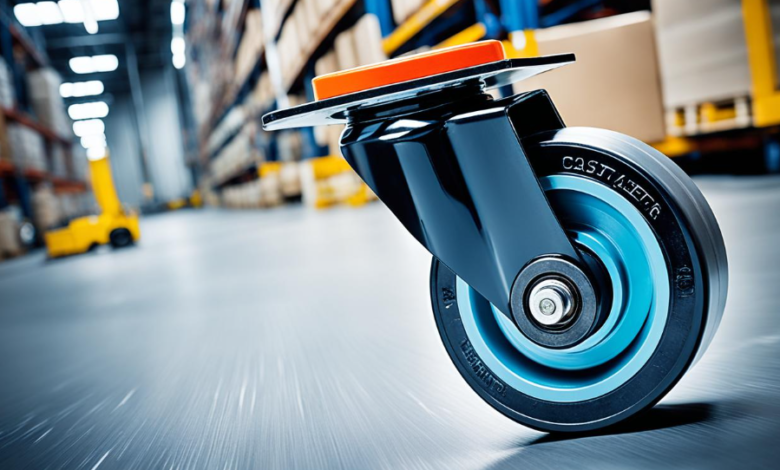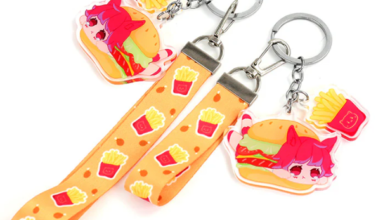Smart Mobility Solutions: Casters and Wheels in Modern Environments

Casters And Wheels: A Practical Overview
Mobility may often be overlooked, yet it’s a cornerstone of productivity and convenience in countless environments. The ability to move equipment and furniture easily is made possible by casters and wheels, which are used in settings as varied as manufacturing plants, schools, medical centers, and homes. At its core, a caster allows a wheel to rotate and swivel, offering a foundation for smooth, controlled movement. Businesses that use Hudson bearings know that high-quality mobility solutions aren’t just about movement—they directly influence workflow, safety, and the longevity of valuable equipment.
There are myriad types of casters and wheels, each engineered for specific roles. Swivel casters are prized for their flexibility, enabling objects to move in any direction, while rigid casters ensure linear, stable motion for transporting heavy items straight across a facility floor. Even such small decisions as tread hardness or bearing selection can drastically affect ease of movement and wear on both floors and equipment. Understanding the differences is a key step for any organization looking to avoid mishaps, inefficiencies, or avoidable repair costs.
Everyday Applications of Casters and Wheels
Casters and wheels quietly support daily life in more ways than we often realize. In office environments, for instance, thoughtfully chosen casters make rolling office chairs, mobile partitions, and reconfigurable desks possible. This adaptability enables faster setups for meetings and changing workspace needs, supporting both collaboration and productivity. Meanwhile, in retail settings, wheeled shelving and carts help staff restock shelves efficiently and change layouts in a fraction of the time, boosting overall customer experience.
Perhaps nowhere is the need for dependable and smooth movement more vital than healthcare. Hospital beds, treatment carts, and supply trolleys all rely on advanced casters to navigate crowded hallways and transition between different floor surfaces. According to data shared by the CDC’s ergonomics initiatives, reducing manual lifting through the use of effective caster-equipped equipment can significantly decrease workplace injury rates among staff. Even at home, the convenience of rolling storage units and portable kitchen islands is reshaping how space is utilized, freeing people from heavy lifting and daily clutter management.
See also: Transforming Business Operations Through Managed IT Solutions
Recent Innovations in Caster and Wheel Design
The mobility industry rapidly adopts new materials like thermoplastic elastomers and advanced polyurethanes to enhance caster performance. These materials offer reduced noise, shock absorption, and resistance to chemicals or moisture, making them ideal for specialized settings like hospitals and food processing facilities. Ball bearings, sealed for life, extend operational lifespan by reducing friction. Emerging trends include smart casters with sensors that track equipment usage, providing facilities managers with information to predict maintenance needs and potentially saving costs. Organizations adopting smart, sensor-equipped wheels report improved logistics and safety outcomes, demonstrating the impact of innovation on entire operations.
Boosting Workplace Efficiency With Mobility Solutions
Incorporating the right casters and wheels is transformative for operational efficiency. Every move in a warehouse, hospital, or even a classroom becomes easier and safer, reducing physical strain on staff and time spent manually moving objects. When workers have access to equipment that rolls smoothly—even under heavy loads—fatigue and risk of injury drop significantly. Evidence from Safety+Health Magazine highlights that well-matched caster and wheel choices reduce physical effort and contribute to fewer musculoskeletal disorders.
- Time savings: Fast repositioning of heavy equipment means work starts sooner and ends quicker.
- Reduced injury risk: When the right casters are installed, the likelihood of jarring shocks or strain-related accidents is dramatically lowered.
- Higher morale: Employees appreciate easy-to-use tools, which leads to greater job satisfaction and less absenteeism.
In my opinion, businesses that prioritize ergonomic and efficient mobility solutions will benefit both their teams and their bottom line.
Guidelines for Safe and Effective Use
Casters are essential for safe workplace use, regardless of their design. They should be inspected for wear, cracks, or debris, and overloaded carts or poorly fitted ones can lead to accidents and equipment damage. Understanding the relationship between wheel type and floor surface is crucial, as uneven, slippery, or delicate floors require specialized caster treads. Best practices include matching caster material and wheel diameter to the demands of the flooring and load, never exceeding the recommended load capacity, and educating team members on safe handling practices. Regular cleaning and lubricating casters is also essential, especially in environments prone to dust, hair, or contaminants.
Sustainability and Eco-Friendly Trends
Sustainability is transforming mobility solutions, with manufacturers introducing casters made from recycled plastics and renewable rubbers, and adopting greener production methods. This not only reduces environmental impact but also improves product lifespan and affordability. Green-certified buildings often specify eco-friendly casters, reflecting their commitment to sustainability. Organizations choose eco-conscious mobility products that align with their branding, appeal to customers and staff, and contribute positively to the planet. This trend indicates a broader rethinking of material handling and movement in shared spaces and industrial settings.
How to Choose Casters and Wheels for Your Needs
Finding the ideal caster or wheel means carefully considering the nature of your application. Begin by researching the combined weight of the items that need moving. Select a caster with an adequate load capacity while factoring in the type and condition of the flooring. For environments that demand low-noise operation—such as libraries, hospitals, or hospitality venues—look for soft-tread wheels optimized for quiet rolling. Opt for corrosion-resistant materials like stainless steel or nylon-based wheels if the equipment must withstand chemicals, moisture, or extreme temperatures.
- Calculate the weight load per caster and include a margin for unexpected overloads or uneven distribution.
- Identify environmental challenges: Is the area often wet? Do you need to roll over thresholds or rough surfaces?
- Note if locks, brakes, or directional movement are needed for control or security.
- Pay special attention to health and safety standards, especially in institutional, healthcare, or food environments.
Outlining these requirements before making a purchase allows for easy product comparisons and ensures optimal long-term results.
What Lies Ahead for Mobility Solutions?
Rapid technological advances promise an exciting future for casters and wheels. Already, the integration of smart technology—Bluetooth monitoring, usage tracking, automatic locking—allows for real-time data collection and predictive maintenance. Advanced composite materials will soon offer even lighter and stronger products with reduced carbon footprints, supporting both environmental and logistical goals. The evolving demands of e-commerce, healthcare, and even educational spaces ensure that the sector will continue to innovate.
Staying up-to-date with such developments positions professionals and organizations to deploy more efficient, safer, and sustainable mobility solutions that support growth well into the future. With careful attention and informed choices, casters and wheels will continue to power our most dynamic and adaptable spaces quietly.




